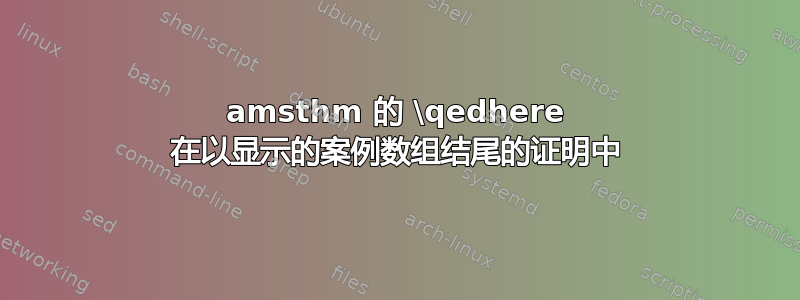
在下面示例中,是否有合理的方法使生成的 QED 框\qedhere与环境的最后一行对齐?cases
\documentclass{article}
\usepackage{amsmath}
\usepackage{amsthm}
\begin{document}
\begin{proof}
This is a proof ending in a displayed \verb|cases| envirnoment, and without
the \verb|\qedhere|.
\[
\begin{cases}
1, & \text{in the first case;} \\
2, & \text{in the second case;} \\
3, & \text{in the third case,}
\end{cases}
\]
\end{proof}
\begin{proof}
This is a proof ending in a displayed \verb|cases| envirnoment, and with
the \verb|\qedhere| at the very end.
\[
\begin{cases}
1, & \text{in the first case;} \\
2, & \text{in the second case;} \\
3, & \text{in the third case,}
\end{cases}
\qedhere
\]
\end{proof}
\begin{proof}
This is a proof ending in a displayed \verb|cases| envirnoment, and with
the \verb|\qedhere| in the last line of that.
\[
\begin{cases}
1, & \text{in the first case;} \\
2, & \text{in the second case;} \\
3, & \text{in the third case,} \qedhere
\end{cases}
\]
\end{proof}
\end{document}
在显示环境中结束的证明gathered或任何-ed变体中也会发生同样的事情。


